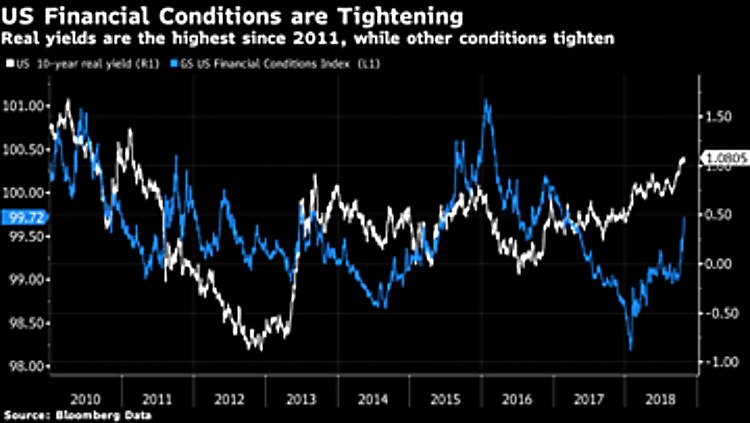The resurgence of volatility in the markets is forcing a question in the minds of investors: is this part of a normalization process after a few years of abnormally low volatility or is this the start of something darker and longer lasting?
As we discussed in our last quarterly letter, we do witness signs of late cyclicality which would dictate a realignment of the portfolio toward more defensive sectors. However, late cycle periods can run for a long time and confound investors. Classic late cycle outperformers are energy related stocks that so far had a mixed record: some days they did provide solace (as of this writing for instance, the IXC is down only 32 basis points versus an S&P500 down 1.75% for the day) and some other days they were lost just like any other sector.
During the Wednesday sell-off, Treasuries and REITs were solidly in the green indicating a traditional flight to safety and in the case of REITs a probable projection of a friendlier Fed. However, today, bonds are doing OK but not so REITS that are being violently sold off with the rest of the market.
Earnings have been mixed; generally good but especially in the high-beta, high valuation universe of tech not quite as uniformly high. Microsoft and Intel did well but Amazon and Google disappointed.
The upcoming mid-term election may also be playing a role elevating volatility levels.
In the end, it may be just a case of a financial system that is tightening and getting speculators off-guard.
John Authers of Bloomberg provides this chart on real yields and the degree of financial tightening:

Real yields (white line) are at the highest level since 2011, a clear indication of tightening conditions.
We also looked at technical indicators to check if panic is now at levels that have in the past marked turning points but with the exception of our favorite breadth indicator (percentage of stocks trading below their 50 day moving average) which is certainly oversold, volatility driven metrics such as the VIX and put and call ratios are not necessarily flashing obvious green lights.
We have now been selling off for 17 days and a few more days of liquidations should create opportunities. For the longer term, we stick to our thesis that forward rates of return will be generally subdued and diversification should start to add value rather than deducting as it had been the case in the momentum market of the last couple of years.
